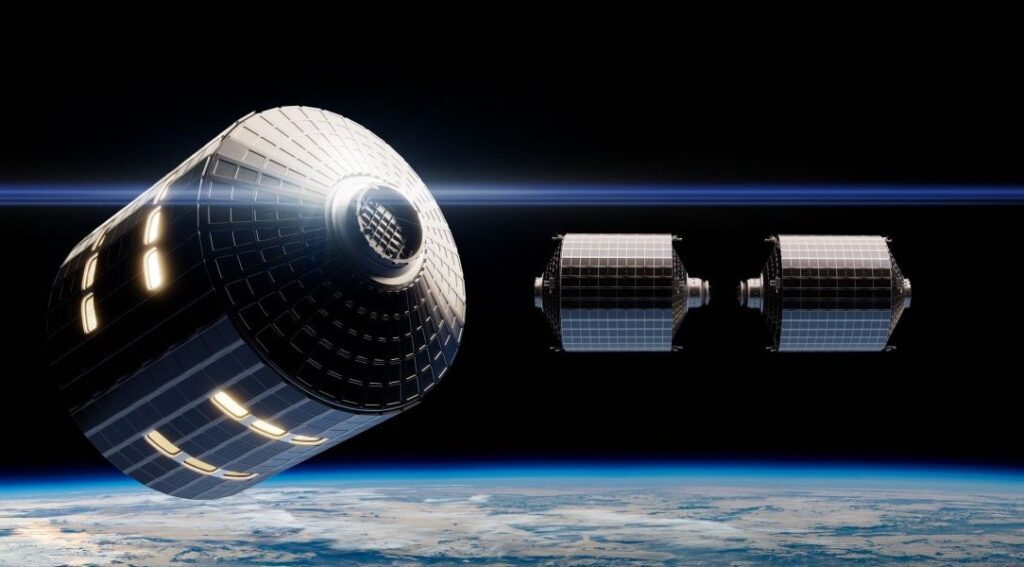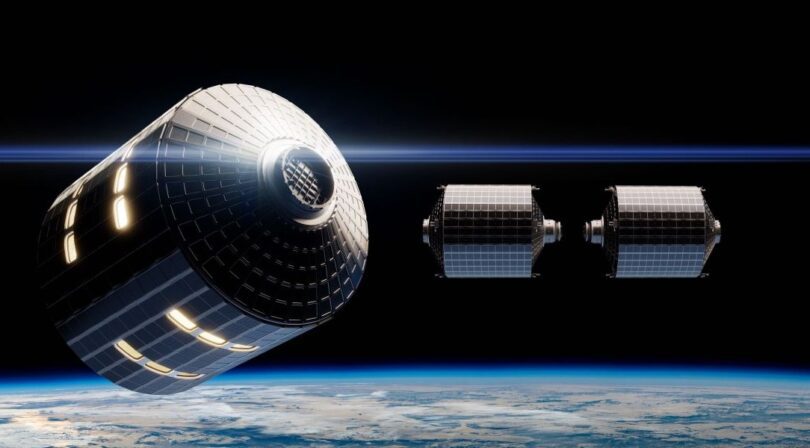United States is pushing forward with its space capabilities by developing an orbital aircraft carrier. This platform, conceptually similar to an aircraft carrier at sea, will store satellites in orbit and launch them as needed, enhancing U.S. space superiority by providing rapid replacement of disabled satellites, and could eventually support other space-to-space or ground-based logistics missions. The Space Force is the spacefaring wing of the US Department of Defence created by President Donald Trump in 2019.
The orbital aircraft carrier will serve as a pre-positioned, in-space hub for storing and launching satellites. The acceleration of the project was to counter potential space arms races and threats from adversarial nations.
The project is led by Gravitics in partnership with the U.S. Space Force, which is aiming at revolutionizing satellite deployment and bolstering the national security.
Gravatics Orbital Carrier can launch up to 10,000 kilograms (22,046 pounds) of cargo. The carrier is expected to be launched for demonstration as early as 2026. The company’s co-founder and CEO, Colin Doughan announced: “The Orbital Carrier is a game-changer, acting as a pre-positioned Launchpad in space. It bypasses traditional launch constraints, enabling space vehicle operators to rapidly select a deployment orbit on demand.”

It is a $60 million project to create an orbital aircraft carrier. This platform is expected to transform the way satellites are launched and deployed.
The project hopes to carry a direct launch of satellites from Earth’s orbit. This initiative, if successful, will be able to carry a faster response to any national security threats. This approach will eliminate the dependency on rocket launches and will provide US with a strategic advantage for military operations. Additionally, the carrier’s capability to conceal satellites provides a tactical advantage as well. According to Gravitics CEO Colin Doughan, the carrier is a “game-changer” that aligns perfectly with the Space Force’s mission of achieving orbital dominance.
The development of the orbital aircraft carrier is a successful endeavour between a joint public-private partnerships in the space sector. Gravitics, along with Axiom Space, is also working on a pressurized space module. It is a USD 150 million contract with Axiom Space for a module that would play a “utility role” in Axiom’s commercial space station.
Aside from that, Graviatics will have interests in commercial space station work. They signed an agreement with NASA in June 2024 to assist in verification and validation plans for large modules, ranging from 4 to 8 meters in diameter.
Collaborations between private companies and government entities are vital for integrating innovative technologies into national defence strategies.
More on defence technologies:
China tests unmanned XXL uncrewed submarines in South China Sea: https://www.thestrategicperspective.org/beijings-plan-tests-xxl-uncrewed-submarines-in-south-china-sea/
Turkey and Egypt reach agreement for a joint production of drones in Cairo: https://www.thestrategicperspective.org/turkey-egypt-agreement-to-jointly-produce-vtol-drones-in-cairo/
Turkish Steel Dome to rival Israel’s Iron Dome: https://www.thestrategicperspective.org/turkish-steel-dome-to-rival-israels-iron-dome/
India builds new warships: https://www.thestrategicperspective.org/100th-and-101st-indian-built-warships-adding-to-indias-military-self-reliance/
Reliance Infrastructure lands a deal with Rheinmetall: https://www.thestrategicperspective.org/reliance-infrastructure-lands-a-cornerstone-deal-with-rheinmetall/
The use of AI for psychological warfare:
https://www.thestrategicperspective.org/psychological-warfare-through-ai/










